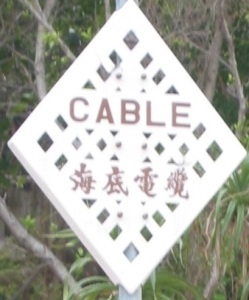Broadband outliers
 It’s a 30-minute ferry ride from Central to Mui Wo, but the digital divide between Lantau and the rest of Hong Kong is much broader.
It’s a 30-minute ferry ride from Central to Mui Wo, but the digital divide between Lantau and the rest of Hong Kong is much broader.
The average broadband downlink on Lantau and other Hong Kong islands is somewhere south of 7 Mbps. That’s not even a tenth of the city’s average download rate of 84.6 Mbps; the actual rate in fact is probably closer to one-twentieth. The 7 Mbps is the theoretical maximum on the PCCW service and is so far below the notion of acceptable broadband to the rest of Hong Kong that the company doesn’t even list it on its website.
It’s no surprise why this is so, PCCW-HKT is a de facto monopoly on Hong Kong’s outlying islands, where it is not viable for any other broadband company to build a network. Both HGC and HKBN and have assured me of that.
The telecoms sector traditionally deals with this through a universal service obligation (USO), which guarantees provision of uneconomic but essential services. Hong Kong actually has a USO, but it just covers voice. Basic telephony is simple – you either have a working phone or you don’t.
But broadband isn’t just broadband. You can get HKBN’s 1Gbps symmetric service for HK$476, and PCCW’s minimum published rate is 100 Mbps for $598. Then there is the service delivered to residents of South Lantau and the other islands.
The telecom regulator in fact considered a broadband USO back in 2006, but decided against it because it would “inevitably distort the market process and impose cost burden on users.”
That’s what you’d expect from government officials unwilling to step out of their comfort zone, so let’s look at the numbers.
Hong Kong has 2.265 million broadband-connected businesses and households (businesses account for 10%). South Lantau, Peng Chau, Cheung Chau and Lamma have a combined population of 53,000 and around 18,000 households. Let’s assume the same proportion of business customers as the rest of Hong Kong, which takes us to around 21,000.
Those notional 21,000 customers amount to just 0.9% of the total broadband subscriber base. My very rough estimate of the cost of an upgrade to a mix of fibre and advanced DSL is maybe US$30m (HK$233m). Over five years, that breaks down to HK$47m a year, or a grand sum of HK$20.5 per year for each and every broadband customer. Even if the actual cost is double my estimate, it is difficult to see that as a burden to anyone. (For the record, Ofca doesn’t offer any figures at all.)
In a tragi-comic appearance at the Islands District Council 18 months ago, Ofca officials explained away the PCCW monopoly as a result of “business decisions” by their competitors. Tearing up hundred-dollar bills on Des Voeux Road is also a business decision, and is probably more profitable than building a rival network from scratch. Ofca’s vocabulary doesn’t seem to include “barrier to entry,” “uneconomic services” or “market failure.”
While Ofca officials are blissfully relying on the magic of the invisible hand, other governments are making decisions. Most notably, the US Federal Communications Commission has now lifted the minimum for downstream broadband from 4 Mbps to 25 Mbps. For rural areas it has also ruled a minimum of 10 Mbps. In its national broadband plan, the Australian government has promised at least 50 Mbps for those on fibre connections and 25 Mbps for the rest.
These continent-sized countries are determined to set thresholds for broadband because they know it matters. And if they can, then so can tiny Hong Kong. It’s time the SAR government acknowledged that the current market arrangements are not working for island populations. The solution is to set minimum broadband standards and to fund them through a USO.
One final point. The government has earmarked Lantau as the centrepiece of the SAR’s economic development in the coming decade. To date all of this has involved doing things to Lantau. It’s time our officials came up with something for Lantau.

Hmmm, my acquaintances in DB, (not that far from the rest of us) seem to have no trouble getting and keeping high bandwidth connections. While my connection in San Wai Village Pui O is not that fast, it has been quite reliable over the years
7MBps? You don’t know how lucky you are! Here on Lamma the best PCCW can offer is 3MBps… It hurts.
Hi Malcolm, We feel your pain. I hope you’ve done the survey: https://gogol.typeform.com/to/FhOft5
cheers
I have to say in Pui O, the speed is still a donkey 5Mbps and at its fastest I recorded 6.66Mbps for a 8Mbps service, but that was very infrequent. We gave up cable TV five years or so ago. The speed drastically drops every weekend, Sunday nights its almost unusable and often we loose connection altogether, not very reliable, no doubt because every one is at home and on the net on Sunday nights and that is a current state of affairs, It also degrades in the rain as the over head cables are in a poor state of repair, nothing gets done despite 5 years of complaint to PCCW and OFCA. A new service provider would be so welcomed